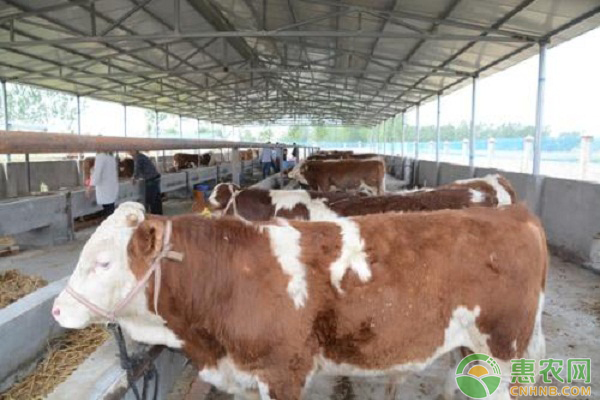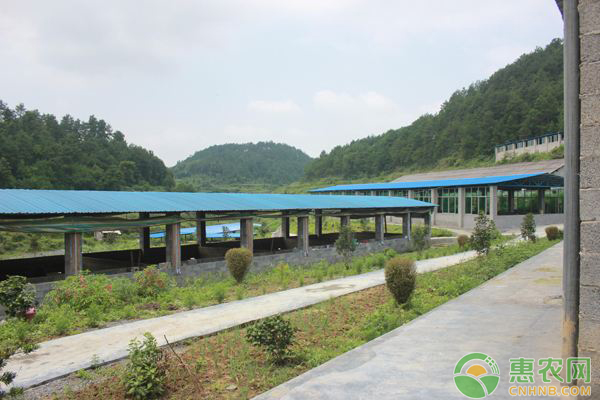In the process of beef cattle breeding, the act of actinomycetes of beef cattle may occur. Beetle actinomycosis is a chronic infectious disease. If it is not treated in time, it will lead to a decrease in production performance. In severe cases, it will lead to difficulty in feeding, swallowing, and even appearing. Death occurs in heart failure. This article will specifically introduce the symptoms of beef cattle actinomycosis and Chinese and Western treatment.

First, the occurrence of actinomycetes in beef cattle
Pathogenesis
When a bovine is infected with a pathogen, it causes an inflammatory process in the affected tissue, that is, a chronic infectious granuloma occurs, and a purulent lesion containing the pathogenic bacteria can be seen at the center of the granulation. In addition, there is sometimes a significant proliferation of connective tissue during the process of inflammation, but no suppuration occurs. Hyperplastic connective tissue can develop tumor-like neoplasms, that is, actinomycetes. If the pathogen invades the tongue tissue of the cow, the proliferating tissue often breaks through the mucosa and ulceration occurs. If the granulation of the bone grows, it will cause the bone tissue to be destroyed, causing the bone to disintegrate, and as the bone is gradually destroyed and reborn, the texture will be loose and the volume will increase significantly. In addition, due to the presence of white blood cells in the tissue, and the presence of sulfur-like particles in the pus and the reproduction of the pyogenic bacteria, it becomes an abscess or a rash.
2, clinical symptoms
The diseased cow is mainly formed into a hard block in the face and the lower jaw. The size is close to the egg. The texture is hard like a rubber. When the external stimulus or the body's resistance is weakened, the mass will develop rapidly and even spread to the entire head or neck. , forming a clear boundary. In the later stage of the disease, the skin of the lesion was septic and ulcerated, and pus was discharged. When lesions occur in organs such as the tongue, throat, and lungs, it can cause sick cows to drool, it is difficult to chew, swallow, appetite and drink abandonment, body temperature rises, coughing often, and breathing urges.
3, pathological changes
There are nodular-like products in the affected part of the diseased cattle. The size is close to the lentils or peas, and a large number of small nodules will aggregate with each other to form a large nodule, which eventually becomes an abscess. There is a milky yellow pus in the abscess, which contains the actinomycete; if the pathogen invades the bone, it will continue to grow, the appearance is like a honeycomb, the cut surface is often white, the surface is smooth, and the inside is inlaid with a small abscess. Sometimes there will be ulceration on the oral mucosa, or there will be mushroom-like products, a yellow-brown mesh shape, soft texture, and the calcification may occur when the disease lasts for a long time.

Second, the prevention and treatment measures of cattle actinomycosis
Cause
The pathogen of this disease is Bovine Actinomycetes, in addition to Actinobacillus linii and Staphylococcus aureus, which can cause similar lesions in cattle. Bovine actinomycetes mainly invade bones and are bacilli that do not move without forming spores. It looks like sulfur particles in the tissue of cattle, and its size is gray, grayish yellow or slightly brown, and the texture is soft or hard. The bacteria are weakly resistant and die within a few weeks of culture.
This bacterium is generally present in the mouth of healthy cattle as one of the normal bacterial populations. Therefore, the disease can be said to be an endogenous infection. The disease is common in cattle, especially young cattle are most susceptible to this disease, sporadic occurrence.
The pathogen of the disease exists in contaminated feed, soil and drinking water, and is parasitic in the mouth and throat of the cow, and in the tonsils. Therefore, actinomycosis can occur on its own as long as it is damaged on the mucous membrane or skin. When the cattle are fed with a stinging feed, the oral mucosa is damaged and the disease is caused. It has been observed that when cattle are grazing in low-lying wetlands, this disease often occurs.
2. Symptom
Common jaw bones have obvious boundaries and can not move, and the swelling usually progresses slowly. It is generally seen that the bones have been thickened and even found when the chewing is difficult. Sometimes the swelling develops quickly and spreads throughout the skull in a short period of time. The initial swelling of the heat is painful, and there is no pain in the later stage.
As time progresses, the teeth loosen or even fall off, and the sick cows feel difficulty swallowing and chewing, and the nutrition is affected and quickly lose weight. Sometimes the skin is purulent, ruptured and pus out, forming a fistula for a long time. Head and neck tissue also often induration, not hot and painless. When the tongue and pharynx tissue become hard, it is called "wood tongue disease", and the sick cow is rogue and difficult to chew. When the breast is sick, it is diffusely enlarged or has a focal induration, and the milk is thick and mixed with pus.
3. Prevention
In order to prevent the occurrence of this disease, avoid grazing in low-lying areas. When feeding, it is best to soak the hay, glutinous rice and other forages before feeding, to avoid stab wounding the oral mucosa, especially to prevent skin and mucous membrane damage, and to treat the wound in time.
The induration can be removed surgically. If a fistula is formed, it should be removed simultaneously with the fistula. The newly created cavity after excision is filled with iodine gauze cloth, replaced once every 1-2 days, and 10% iodoform ether or 2% iodine aqueous solution is injected around the wound; oral potassium iodide, 5-10 grams per day of cattle, yak 2- 4 grams, can even take 2-4 weeks; severe cases can be intravenously injected 10% sodium iodide, 50-100 ml per day, once every other day, share 3-5 times. In the course of medication, such as skin rash, hair loss, tearing, weight loss and loss of appetite, iodine poisoning, should be suspended for 5-6 days or reduce the dose; antibiotics are also effective for this disease, penicillin, streptomycin can be injected Around the affected part, penicillin 2 million units, streptomycin 1 million units, once a day, for 5 consecutive days for a course of treatment; potassium iodide and streptomycin at the same time, the effect on soft tissue actinomycetes and wood tongue disease.

Third, beef cattle actinomycetes treatment measures
Western medicine treatment
In the deep swelling of the diseased cattle, an appropriate amount of 5% iodine is injected once a day, and a mixture of penicillin potassium and streptomycin is injected twice a day according to the body weight. At the time of treatment, the sick cows were injected with iodine in the swollen area every morning, followed by penicillin and streptomycin in the neck muscles; in the afternoon, penicillin and streptomycin were injected around the masses, and the amount of iodine was determined according to the size of the tumor. If the size of the actinomycetes is close to the fist, use 20mL of iodine each time, and increase the dosage as the mass increases. If the pathogen invades the soft tissue of the head, neck, and jaw and causes local swelling, due to the large swelling area, 50 mL of iodine can be used each time, usually for about 5 days. If the mass begins to purulent, surgery should be performed before the rupture. First, use a scalpel to cut the swollen part, so that the pus is completely drained, then fill the gauze soaked with iodine, and replace it once a day for 3 days. Can recover. It is also possible to inject 10 to 20 mL of 5% to 7% sodium hydroxide solution at each lesion, which has a good therapeutic effect. If the diseased cow is in a pus-free period, inject it into the base of the lesion with a syringe that draws sodium hydroxide solution by a crisscross method, and pay attention to the edge of the lesion. After the complete injection, wash the liquid leaking to the outside with clean water to prevent surrounding normal tissue. If the diseased cow is in the suppuration stage, first use a scalpel to puncture the center of the lesion, drain the pus and then inject it into the base of the cavity with a syringe that absorbs sodium hydroxide or wash the ear. Note that the inner wall of the chamber is completely stained with the liquid, and finally the external liquid of the wound cavity is washed with water. By injecting sodium hydroxide solution into the lesion, the necrotic tissue at the site is further necrotic, scarred, and atrophied, and finally the white line falls off, and the normal tissue is proliferated and the cavity is filled to be cured.
2. Chinese medicine treatment
The main day is to reduce swelling and disperse, clearing away heat and detoxifying, replenishing qi and promoting blood circulation. For topical lesions formed on soft tissues, external treatment is used. If the volume is small and the healthy tissue is decomposed clearly, 5 pieces of Lycoris radiate and 250g of quick lime can be taken. After completely mashing, add 250g of white wine, stir until paste, and spread on the lump. Or take 40g dandelion, 40g succulent, 30g pepper, /IOg onion, add boiling, pour out the liquid, add 100g of magnesium sulfate, then soak the gauze in the affected area; or take 30g gallnut, 60g cork 10g realgar, 30g rhubarb, 5g borneol, 30gH 芨, all into a powder, add 120mL of honey, simmered with a proper amount of vinegar to form a paste, directly applied to the lumps, replaced once every other day. At the same time, the diseased cattle should be combined with internal medicine, 90g Glauber's salt (post-in), Astragalus, Phellodendron, Rhizoma Coptidis, Radix, Yujin, Scrophulariaceae, Scorpion, Rhubarb, Forsythia 45g, 24g licorice, decoction after taking water Liquid, wait until the temperature is suitable, if the swelling spreads to the lower jaw and throat, add bean root, burdock, and shoot dry for clearing the throat. Or take 60gH芷, 60g Guanzhong, 50g Zhimu, 60g Scrophulariaceae, 50g scorpion, 50g forsythia, 60g silver flower, 50g jaundice, 50g cork, 50g rhubarb, /IOg angelica, 60g Mutong 80g Huzhang, 60g Pueraria, 60g Ophiopogon japonicus, 50g wild chrysanthemum, /IOg berberine, g chuanchuan, 10g licorice, 60g platycodon, with wick as the introduction, add water to boil, take the liquid medicine orally, continuously use 1 to 2 doses. It should be noted that if the pregnant cow is sick, it is not allowed to use Angelica, Rhubarb, Pollen, Guanzhong, and add appropriate amount of Chen Ai and Motherwort.
Non Contact Termometer,Smart thermometer,ear thermometer,best baby thermometer,infrared thermometer instructions
Shenzhen Urion Technology Co., Ltd. , https://www.urionhealth.com